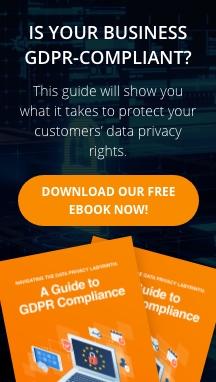Remote work is surging as a response to the COVID-19 outbreak, but it brings new productivity, security, and communication challenges. For example, if an employee-owned device (laptop, PC, etc.) is connected to the company’s network via a VPN connection and it contains a virus or malware, the malware could spread to your company’s network. Additionally, it becomes more of a challenge to verify the legitimacy of emails. For example, you’re no longer right down the hall from your CEO who requested an unusual wire transfer. You might also be unfamiliar with policies and procedures as they pertain to a work from home environment, and the list goes on.
We’ve developed a list of guidelines and tips to assist you as you prepare to work from home in a safe, functional work environment. Note, this list is intended for guidance and information purposes only. If you have any questions regarding these tips, please reach out us for additional information.
Guidelines & Tips
- Use reliable online collaboration tools for instant messaging, file sharing, and audio and video conferencing.
- Physically secure your work space as much as possible. Ensure you have the ability to lock your devices (laptop, PC, etc.) and any business relevant information when not in use. Cable locks for laptops should be used when necessary. Laptops and devices should be locked out of sight and/or in the trunk if it must be left in a vehicle unattended.
- Avoid using your personal devices for work-related business, if possible.
- Safely perform conversations without visitors eavesdropping or shoulder surfing, especially while working in a mobile setting, such as a coffee shop.
- Having a help desk support team in place to resolve problems and ensure your employees know how to use the technology effectively goes a long way
- Protect the data you are accessing by using a VPN to remotely log into the company network, and ensure you are protecting data visible on your screen with a screen protector. This is especially critical for employees who are required to be HIPAA compliant, PCI compliant, etc.
- Stay connected and engaged with cloud-based collaboration software such as Microsoft Teams or Zoom.
- Restrict the use of devices containing business-relevant information. Do not let family members, friends, or anyone but yourself use company-owned devices or personal devices used for business purposes.
- Use strong unique passwords on all your devices and accounts to prevent unauthorized access
- Wireless Security: Change default WiFi router passwords; Enable WPA-2 or higher encryption; Ensure your local router firmware is up to date
- Limit the use of public WiFi and use a VPN when connecting to public WiFi if another connection option isn't available. Never use public Wi-Fi to send sensitive information without a VPN.
- Ensure all personal devices are secure with company-provided or personally owned anti-virus and anti-malware software package from a reputable company (Webroot, Symantec, Norton, McAfee)
- Keep any smart home or Internet-of-Things (IoT) devices updated with the latest firmware (voice assistants, smart thermostats, smart lightbulbs, surveillance cameras, etc.).
- Ensure default passwords are changed on all devices connecting to your home network.
- Ensure the software on all devices within your home network are kept up-to-date (computers, IoT devices such as cameras and smart thermostats, personal laptops/tablets, etc.).
- Review and follow any Remote Work Policies, corporate Bring Your Own Device (BYOD), and other relevant policies and procedures.
Personal & Security Awareness
- Wash hands regularly, maintain strong personal hygiene, and avoid close contact with others when possible.
- Stay up to date with announcements from the World Health Organization and your local government.
- Be extremely cautious of email phishing scams.
- Limit social media use.
- Be cautious about revealing business itineraries, corporate information, daily routines, etc. in public forumns.



